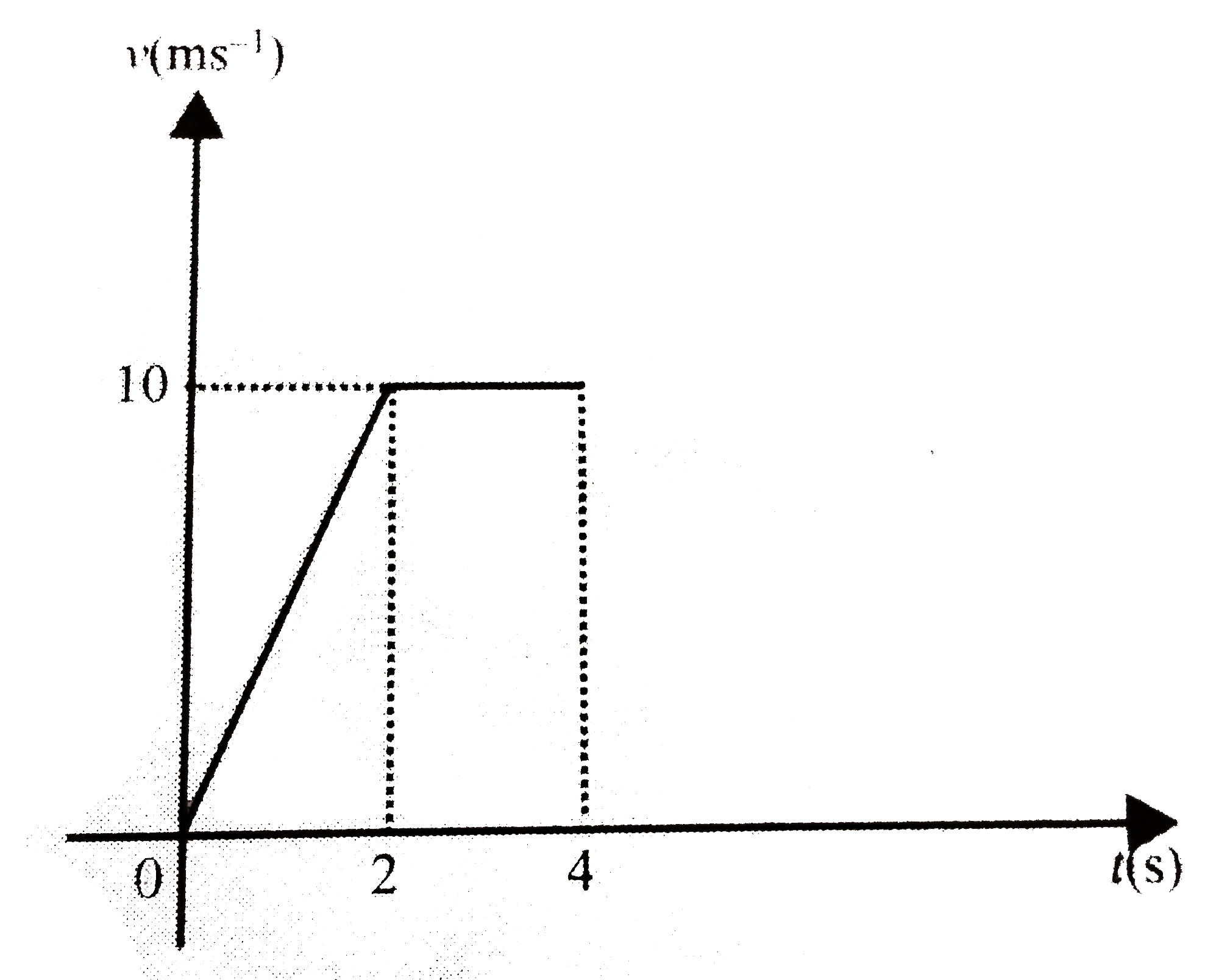An object starts moving with constant acceleration 'a'. Distance travelled by it in first t sec is 10m. Then the distance travelled by it in next t sec
10m
20m
30m
40m
To solve the problem step by step, we will use the equations of motion under constant acceleration.
Step 1: Understand the given information
The object starts moving with a constant acceleration 'a'. The distance traveled in the first time interval t seconds is given as 10 meters.
Step 2: Use the formula for distance traveled in the first t seconds
The formula for the distance traveled by an object under constant acceleration in the first t seconds is:
s=ut+12at2
Where:
- s is the distance traveled,
- u is the initial velocity,
- a is the acceleration,
- t is the time.
Since the object starts from rest, the initial velocity u=0. Therefore, the formula simplifies to:
s=12at2
Step 3: Set up the equation for the first t seconds
Given that the distance traveled in the first t seconds is 10 meters, we can write:
10=12at2
Step 4: Solve for acceleration a
Rearranging the equation gives:
at2=20⇒a=20t2
Step 5: Calculate the distance traveled in the next t seconds
The distance traveled during the next t seconds (from t to 2t) can be calculated using the formula for the distance traveled in the n-th second:
sn=u+12a(2t)2−(u+12at2)
This simplifies to:
snext=12a((2t)2−t2)=12a(4t2−t2)=12a(3t2)
Step 6: Substitute the value of a
Now substituting a=20t2:
snext=12(20t2)(3t2)=12⋅20⋅3=30 meters
Final Answer
The distance traveled by the object in the next t seconds is 30 meters.
The object starts moving with a constant acceleration 'a'. The distance traveled in the first time interval t seconds is given as 10 meters.
The formula for the distance traveled by an object under constant acceleration in the first t seconds is:
- s is the distance traveled,
- u is the initial velocity,
- a is the acceleration,
- t is the time.
Given that the distance traveled in the first t seconds is 10 meters, we can write:
Rearranging the equation gives:
The distance traveled during the next t seconds (from t to 2t) can be calculated using the formula for the distance traveled in the n-th second:
Now substituting a=20t2:
The distance traveled by the object in the next t seconds is 30 meters.
Topper's Solved these Questions
Similar Questions
The speed of a car increases uniformly from zero to 10ms−1 in 2s and then remains constant (figure)

a. Find the distance travelled by the car in the first two seconds.
b. Find the distance travelled by the car in the next two seconds.
c. Find the total distance travelled in 4s.
View SolutionA particle starts moving from position of rest under a constant acceleration if it travels a distance x in t second, what distance will it travel in next t second?
View Solution
Knowledge Check
A particle starts moving with acceleration 2m/s2. Distance travelled by it in 5th half second is
A1.25 mB2.25 mC6.25 mD30.25 mA car starts from rest and moves with constant acceleration. In first t seconds it covers distance x. Then distance covered by it in next t seconds will be:-
AxB2 xC3 xD4 xA particle start moving from rest state along a straight line under the action of a constant force and travel distance x in first 5 seconds. The distance travelled by it in next five seconds will be
AxB2xC3xDs
A particle starts from rest and moves along a straight line with uniform acceleration. The ratio of distance travelled by the particle during the first three seconds to the distance travelled by the particle during the next three seconds is 3 о 2
View SolutionA particle starts from rest and moves along a straight line with uniform acceleration. The ratio of distance travelled by the particle during the first three seconds to the distance travelled by the particle during the next three seconds is 3 о 2
View SolutionA particle starts moving in a straight from rest with constant acceleration until it reaches velocity v. The distance travelled by it until this point is . Then, it covers a further distance x at constant velocity. Finally, it slows down to rest at a constant rate such that it covers distance 2x. The total time for which the particle moved is T .Then ,Tvx=
View SolutionA particle starts moving from rest under a constant acceleration. It travels a distance x in the first 10 sec and distance y in the next 10 sec, then
View SolutionA particle starts moving from rest under uniform acceleration it travels a distance x in the first two seconds and a distance y in the next two seconds. If y=nx, then n=
View Solution
